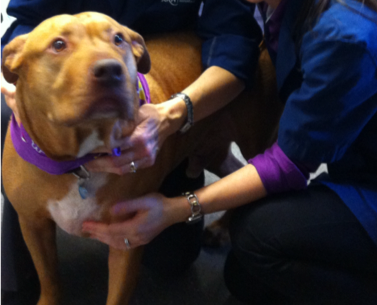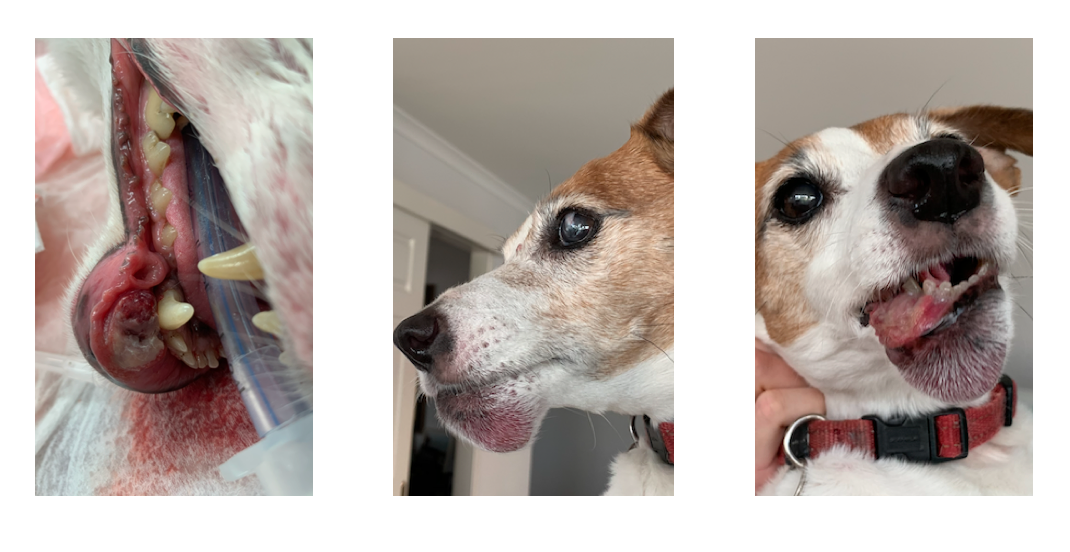Gallery
This is a story about Smokey, a beautiful young cat diagnosed with rectal lymphoma.

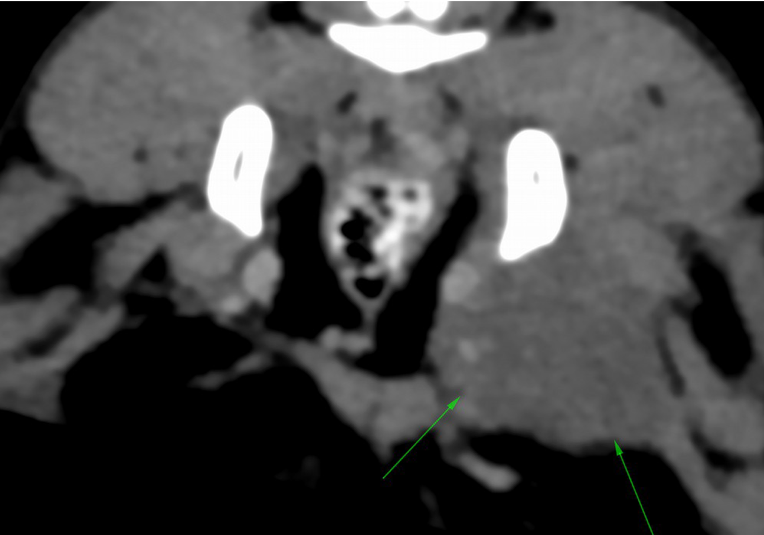
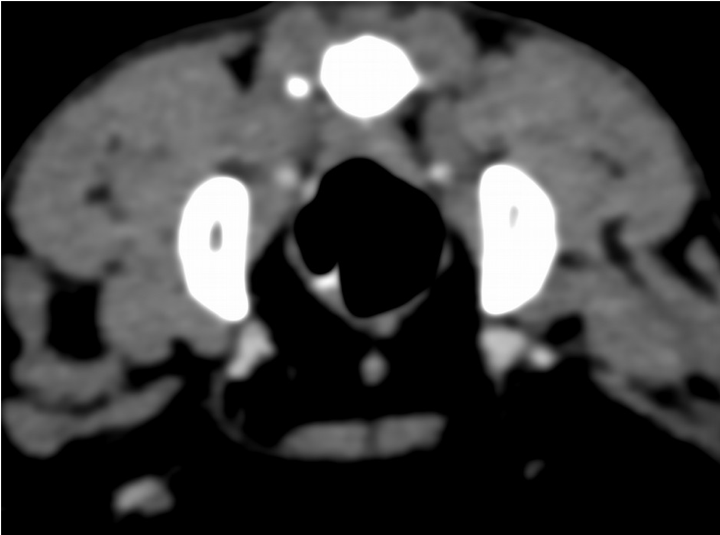
Nitrous. A beautiful female Devon Rex diagnosed with aggressive large cell lymphoma that caused severe left hind limb lameness & pain. Large cell lymphoma has a guarded prognosis without treatment with a median (average) survival time of approximately 1-2 months. With chemotherapy, 50-70% of cats achieve remission with median survival times between 4 and 12 months. At Nitrous’s last recheck, 3.5 years after she was diagnosed, she was cancer & pain-free. Go Nitrous!
CT scan before & after treatment.
Before: Large left pelvic mass (green arrows).
After: Large left pelvic mass has disappeared.
Boof. An 8-year-old male Mastiff X diagnosed with stage II splenic haemangiosarcoma. Unfortunately, splenic haemangiosarcoma is a very aggressive blood vessel cancer, that is incurable. After surgery to remove the spleen (splenectomy), the reported median (average) survival time is 1-3 months. With the addition of chemotherapy, the published median survival times are between 3 and 9 months. Boof had a splenectomy followed by adjuvant chemotherapy. He lived for 1.5 years with an excellent quality of life. He was a gentle giant and I will never forget him.
Prince. A sweet little 10-year-old male neutered Japanese Spitz diagnosed with haemangiosarcoma. However, his cancer was coming off from the liver (and not the spleen). Unfortunately, this is an incurable aggressive blood vessel cancer. The prognosis is guarded with a median (average) survival time of between 1 and 3 months, despite treatment with surgery and chemotherapy. Prince had surgery to remove his liver cancer, and sadly, his cancer grew back approximately two weeks later. Prince was treated with chemotherapy, followed by metronomic chemotherapy and Chinese herbs. He lived for 1.5 years with an excellent quality of life.
Patches. A kind-hearted 7-year-old male Collie X diagnosed with advanced large T cell lymphoma.
He presented sick with enlarged lymph nodes, elevated blood calcium (hypercalcaemia) and elevated kidney enzymes (azotaemia) causing kidney disease.
Left untreated, the median (average) survival time for T cell lymphoma is approximately one month.
With chemotherapy, most dogs with T cell lymphoma achieve remission with reported median survival times of between 6 and 10 months.
Patches completed chemotherapy, and is still alive more than 5 years later.
In his spare time, Patches enjoys playing at the beach with his housemate!
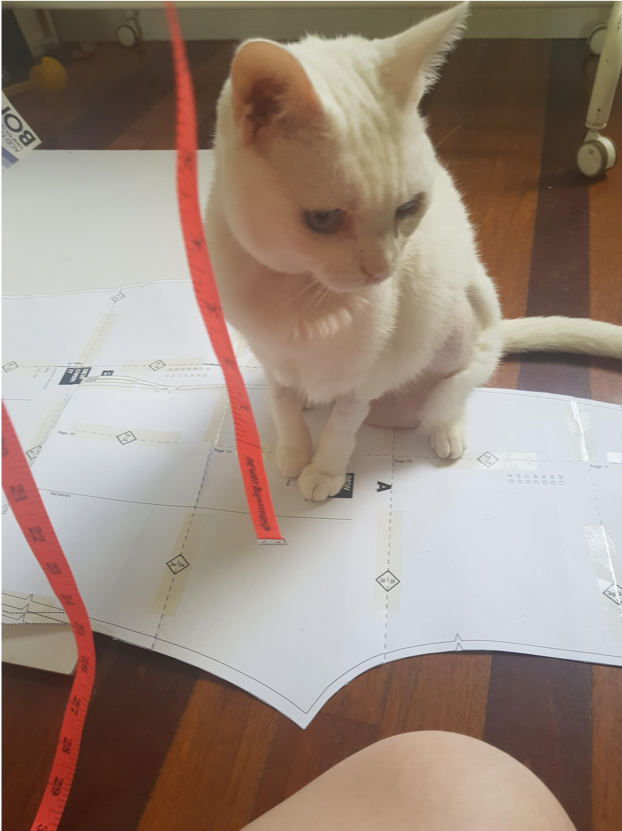
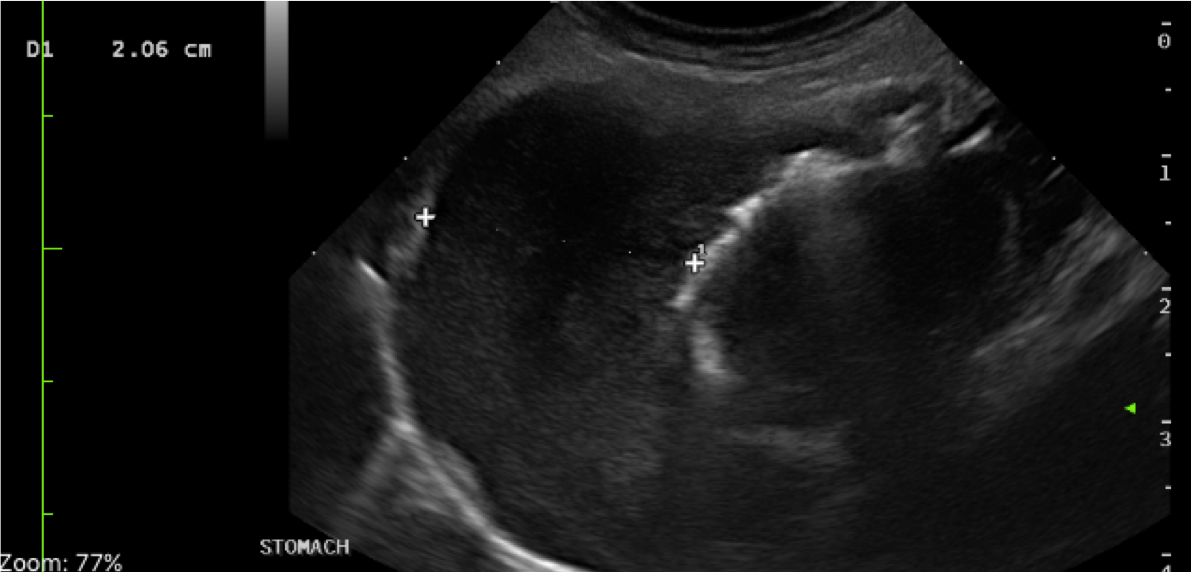
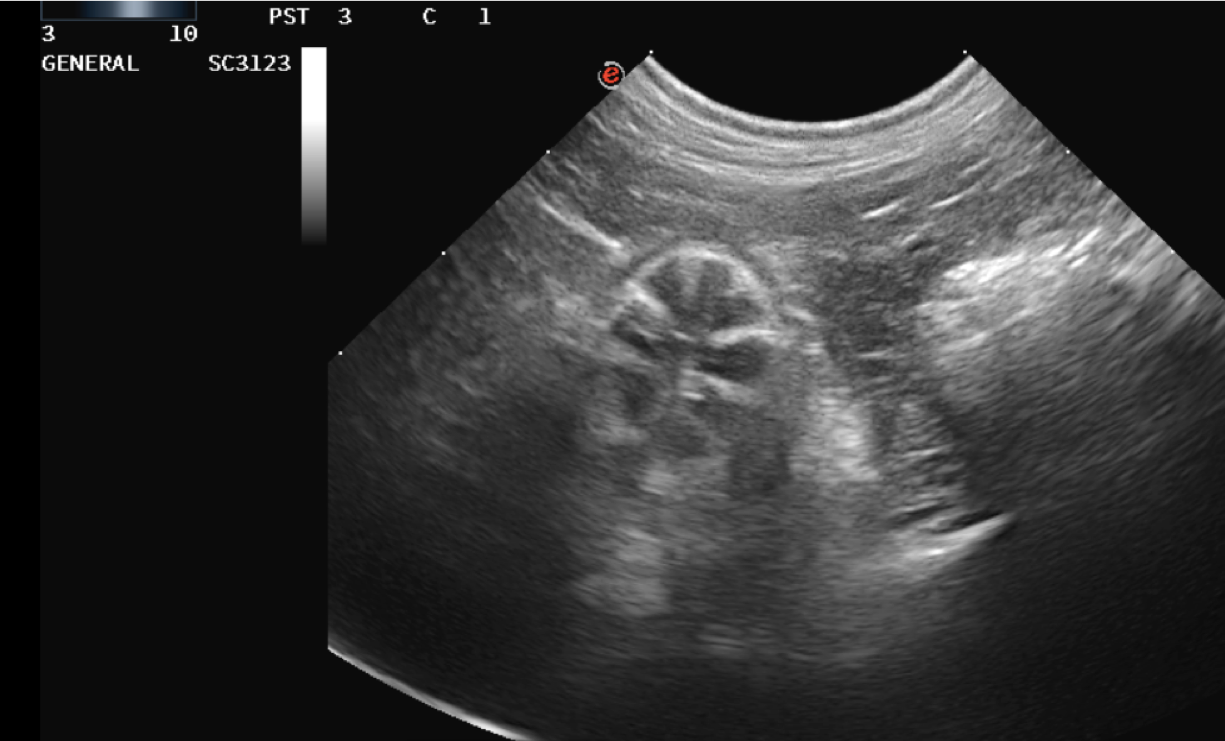
Audrey. A gentle 4-year-old female domestic short-haired cat diagnosed with aggressive stomach (gastric) large cell lymphoma that caused vomiting, weight loss & anorexia. Gastric large cell lymphoma has a guarded prognosis without treatment with a median (average) survival time of approximately 1-2 months. With chemotherapy, the median remission duration is about 3-4 months. At Audrey’s last recheck one year after starting chemotherapy, she was cancer-free and had no clinical signs of illness.
Ultrasound images before & after treatment.
Before: The stomach wall is abnormal & approximately 2-cm thick.
After: Completely normal stomach.

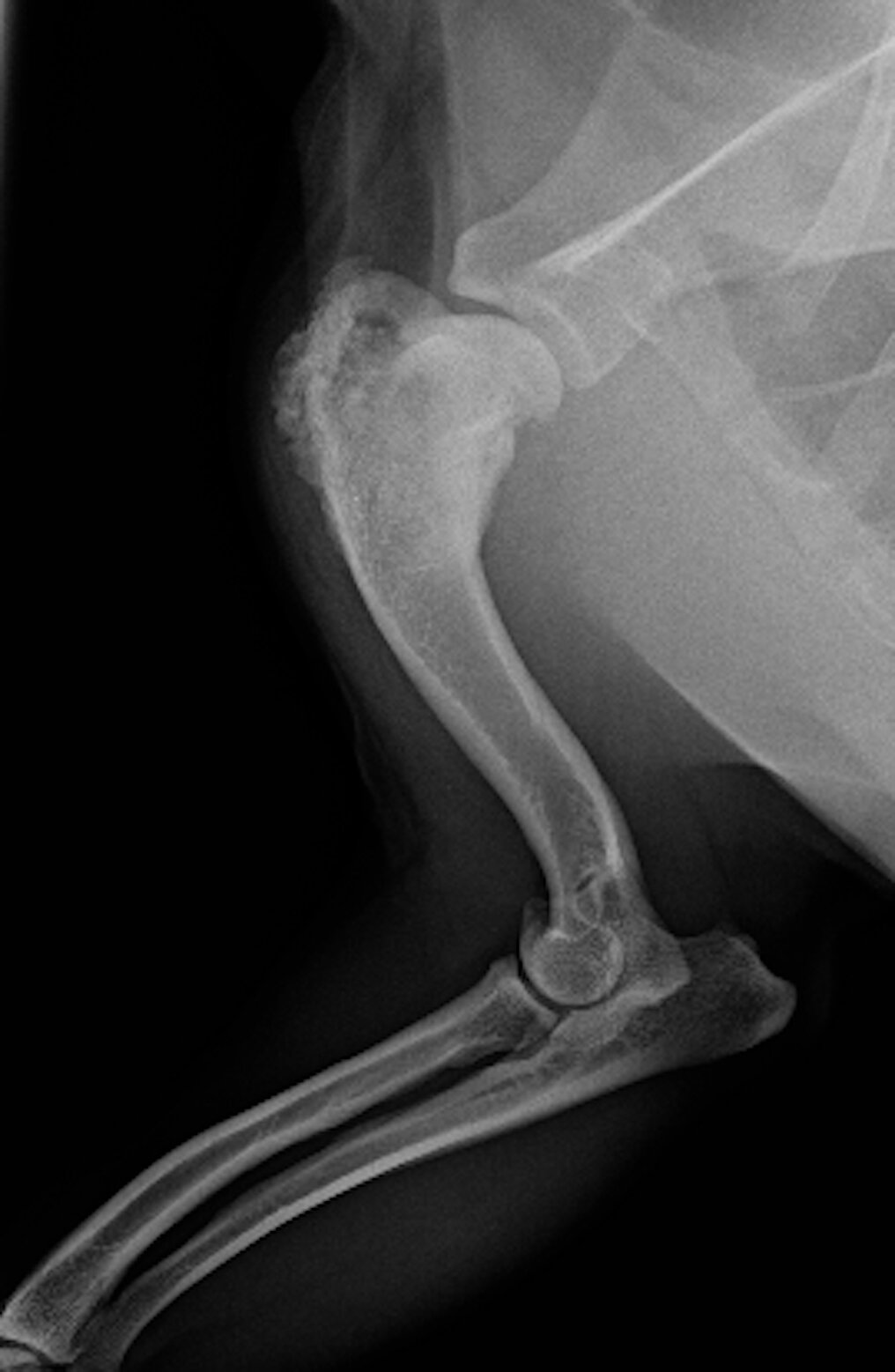
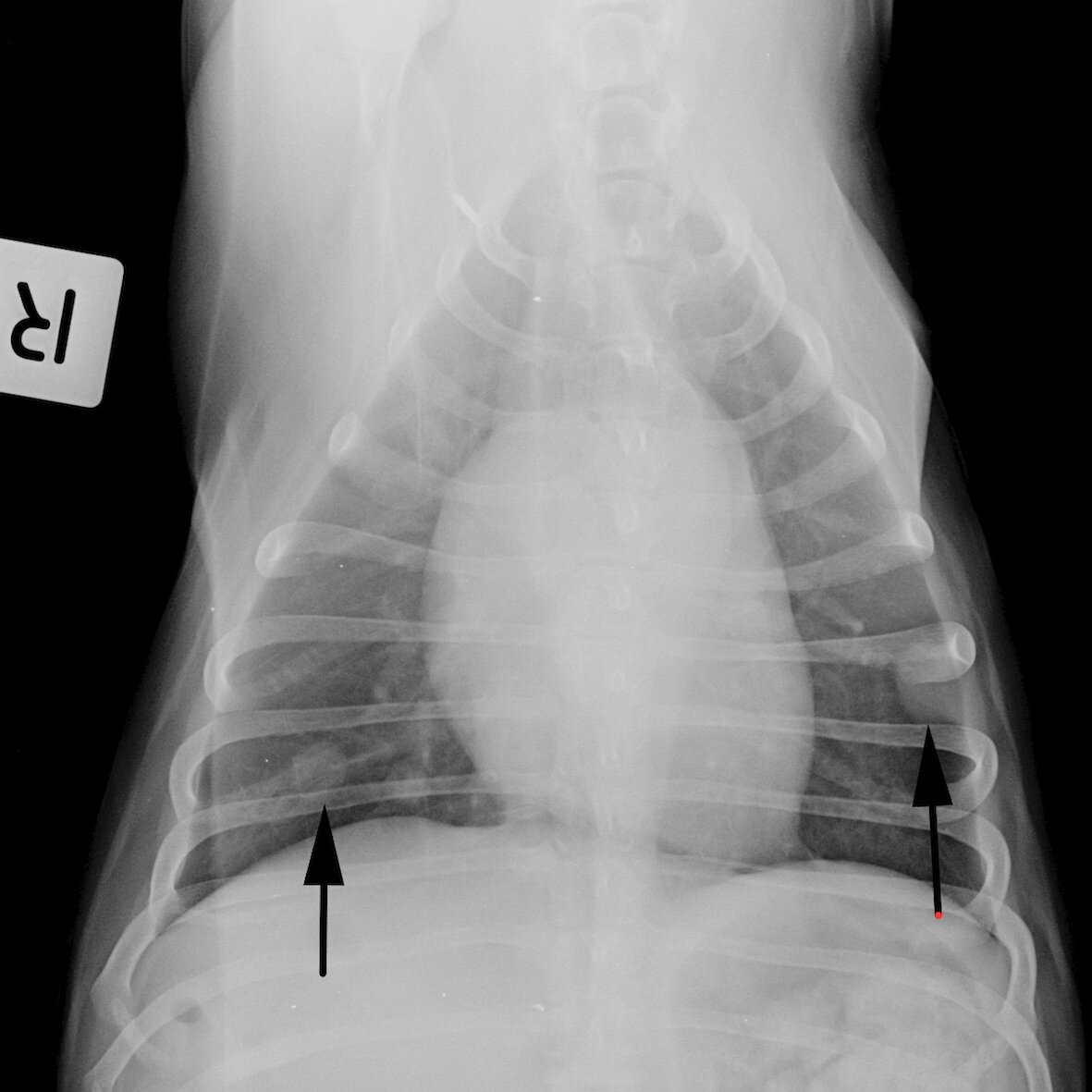

Ella. A sweet 10-year-old female spayed Jack Russell Terrier diagnosed with aggressive bone cancer (osteosarcoma) in her left proximal humerus. Left untreated, most patients succumb to their disease within a few months. Amputation alone has a reported median (average) survival time of approximately 5 months. Amputation followed by chemotherapy has a reported median survival time of about 10 to 12 months, with approximately 20% of dogs alive more than 2 years later. Ella underwent amputation of her left forelimb, followed by chemotherapy. Unfortunately, after 10.5 months, Ella’s cancer spread to her lungs (i.e. pulmonary metastases). In general, in dogs with pulmonary metastases from osteosarcoma, the response to treatment is guarded with reported median survival times of approximately 2 months. Ella was treated with oral Palladia (toceranib) and survived for more than 5 years.
First image: X-ray of bone cancer before treatment, showing an aggressive bone cancer in the left proximal humerus (left forelimb)
Second image: X-ray showing cancer spread to the lungs. Arrows indicate multiple nodules within the lung.
Third image: X-ray of the lungs after treatment, showing resolution of lung nodules.
Jessie. A 17.5-year-old female spayed Jack Russell Terrier. She presented with a large ulcerated, necrotic and painful mast cell tumour in her rostral mandible (front lower jaw). Both her mandibular lymph nodes were also large. Unfortunately, with supportive care alone, the prognosis is guarded with a median (average) survival time of <3 months. Jessie's owner elected to try Palladia (toceranib phosphate). After one week, Jessie's mast cell tumour reduced in size significantly, the necrosis is resolving, and she is comfortable and eating well. The response rate for dogs with macroscopic mast cell tumours is around 40% to 70% and median survival times around 3 to 8 months. I hope Jessie continues to respond well to treatment and enjoy more enjoyable times ahead of her!
Photos before & after treatment.
First three photos: Before treatment, showing a large, ulcerated, necrotic & painful oral mast cell tumour.
Second two photos: One week after starting Palladia, showing a strong response to treatment.
This is a story about Zoe, an 8-year old female Jack Russell Terrier diagnosed with stage III insulinoma.
“Thank you to all the owners who have allowed me to share their pet’s journey.”



